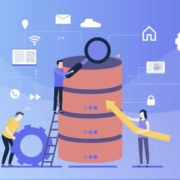Traditional DRaaS offerings typically require rigid data center infrastructure that is expensive and inefficient. Many DRaaS (Disaster Response-as-a-Solution) solutions offer an alternative to on-premises failover, but when they are based on the same on-premises DR (disaster response) technology, they cannot realize the full technical and business advantages of the cloud: multi-tenancy, scalability, agility, and cost-efficiency.
“Incorporating object storage into a backup service is relatively straightforward and, today, is commonly supported by most data protection vendors,” said Tom Critser, co-founder and CEO, JetStream Software. “But service providers haven’t previously had a CDP (continuous data protection) solution that continuously replicates data directly into an object store and uses the object store exclusively to maintain all recovery assets, including the recovery of system information, network configurations, and ongoing protection policies. That’s a very different kind of challenge that JetStream DR on Cloudian uniquely addressed.”
Source de l’article sur DZONE










